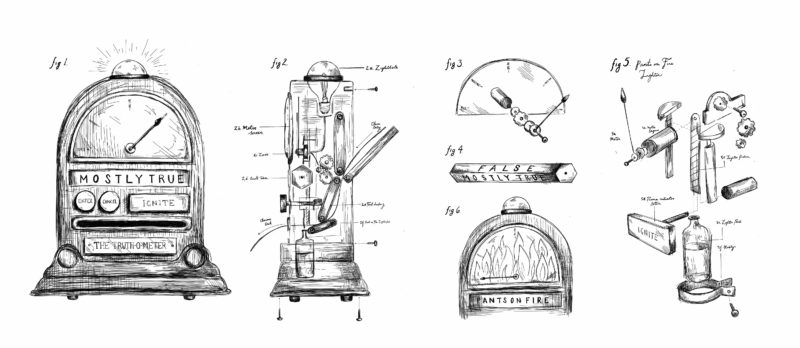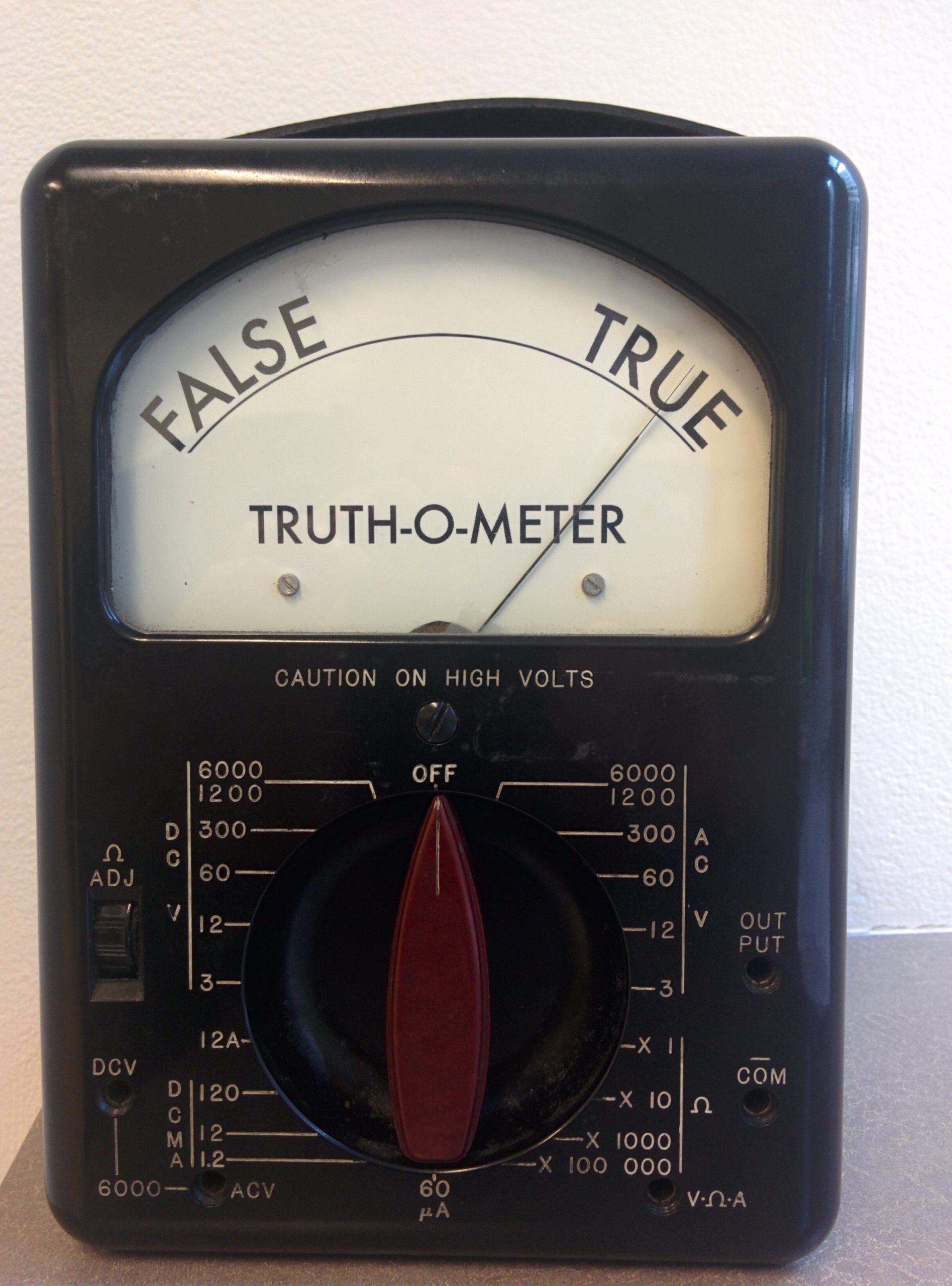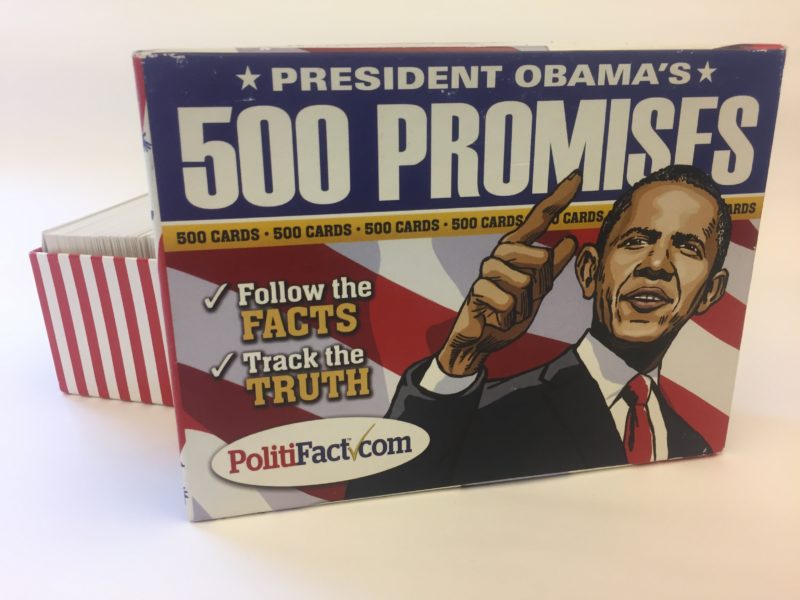Sign up for The Media Today, CJR’s daily newsletter.
There were lots of good reasons we shouldn’t have started PolitiFact.
We were out of our league. The St. Petersburg Times was a regional paper with a good reputation, but we didn’t know much about fact-checking or developing new products in a digital age.
I knew nothing about building a website. My first diagram of the site was a poster board with pasted stories and arrows drawn with a Sharpie.
We couldn’t afford it. It was 2007, and the newspaper business had begun its painful contraction. The predicament was even worse for Florida papers like the Times because the housing crash and the decline in advertising were already underway. With revenue shrinking, the new fact-checking site would steal resources from everyday obligations.
Also, we were wading into a new type of journalism that exposed us to the bare-knuckled partisanship of American politics. We were sure to anger both sides of the political spectrum.
And yet we still built it.
Ten years later, PolitiFact is going strong. It won a Pulitzer Prize in 2009 and became a well-known brand in American journalism. In an age of “alternative facts,” when politicians routinely repeat falsehoods, its work is more important than ever.
You probably know the site for its fact-checks on national politicians and pundits, but there also are PolitiFact partners in 11 states that check claims by governors, state legislators, and members of Congress. Together the state and national sites have checked more than 13,000 statements.

Molly Adair, a graphic artist and Bill Adair’s daughter, drew her impressions of what the patent drawings would have looked like had PolitiFact patented an actual Truth-O-Meter.
PolitiFact helped inspire a fact-checking movement around the world and pioneered a new way of tracking campaign promises. Presidential candidates and other politicians have worried aloud about “being PolitiFacted.” The website and its Truth-O-Meter have even seeped into pop culture, with mentions on Jeopardy!, The Daily Show, and the New York Times crossword puzzle.
Looking back, it’s pretty remarkable that the site survived. I doubt any news organization in America other than the Tampa Bay Times, as the paper is now known, would have stuck with it so long.
***
THE IDEA FOR POLITIFACT grew out of my guilt as a Washington reporter. I’d covered Congress and the White House for a decade and, like other reporters, had included political talking points in my stories without verifying whether they were true. In the spring of 2007, I decided to ask my editors if I could start a fact-checking site for the 2008 campaign.
I sketched an idea for the homepage on a Microsoft Word document. Titled “The Campaign Referee,” it featured the “Truth-o-Meter,” which rated statements “True,” “Kinda true,” “Half True” and “Wrong.”
That approach was pretty radical back then. Political journalists preferred the comfort of on-the-one-hand, on-the-other-hand journalism to calling out falsehoods. FactCheck.org, a project the Annenberg Public Policy Center at the University of Pennsylvania, launched in 2003 and was a pioneer of fact-checking. But the site didn’t use a rating system and did not keep score of how candidates fared. I thought we could build a better mousetrap. We could make fact-checking more accessible to a larger audience by rating claims on a Truth-O-Meter and tallying candidates’ records.
The editors were unanimous about the importance of fact-checking as a public service.
I took the poster to a meeting in St. Pete and made my pitch to a group of editors. They were generally quite supportive even though PolitiFact was sure to drain resources from the paper’s usual coverage of a presidential campaign. Neil Brown, the editor of the Times, and Scott Montgomery, the paper’s government and politics editor, gave me a few weeks to write some prototype fact-checks.
We brought in Matt Waite, a reporter who had done lots of data journalism, to build the website. He incorporated the ideas of Adrian Holovaty, a visionary web developer who believed that journalism should be structured like a database so readers could interact with it.
A key part of our success was we were freed from our daily obligations. I essentially stopped being the paper’s Washington bureau chief and focused full time on PolitiFact. Our launch team had tremendous autonomy. We were like a band of pirates that could try new things and challenge the company’s usual way of doing things.
We realized it wasn’t practical to put PolitiFact on the newspaper’s web publishing system, so Waite built ours from scratch. That early decision ensured PolitiFact had a distinctive and flexible structure that enabled us to add state editions and the Obameter, our campaign promise tracker.
We brought together some of the most creative people at the Times to suggest names and help design the site. Kevin McGeever, a web editor, suggested we include a rating of “Pants on Fire,” a phrase so good it’s become synonymous with PolitiFact. We also got early help from reporters at our sister publication Congressional Quarterly, who provided expertise about Capitol Hill.
Why was the Times willing to make such a bold step? Part of it was the paper’s ambitions. It’s a regional paper that has always sought to play on the national stage. Also, the editors were unanimous about the importance of fact-checking as a public service.
“We are true believers in journalism as an instrument of democracy,” Brown wrote when PolitiFact launched. “Even as we seek to reach customers in new ways, we see our primary obligation as helping citizens participate fully in the democratic process.”
The PolitiFact music video.
It also helped that the owner of the Times is the Poynter Institute, a journalism education center. That reduces the pressure for the newspaper to make big profits.
The editors believed in fact-checking so much that they were willing to prioritize the work, even though it meant sacrificing much of the political reporting the Times’s Washington bureau traditionally published, especially during election years.
Still, we weren’t sure how long PolitiFact could last. Although Brown’s 2007 column mentioned our hope of expanding the fact-checking to state and local politicians, we also had a contingency plan. If the site was a flop, we were going to shut down in six months.
***
THE FIRST FEW WEEKS went well. We got a warm welcome from Brooks Jackson at FactCheck.org, who generously emailed his readers to encourage them to check us out. “So far we like what we’ve seen,” he wrote six days after we launched. “The writing is crisp and clear, sources are clearly cited with hyperlinks where appropriate, and the Web site is nicely organized.”
Jackson wasn’t keen on the Truth-O-Meter, though. “We tend to leave ‘truth’ to theologians and philosophers,” he wrote. But he said, “We admire (PoltiiFact’s) panache.”
Jackson’s welcome provided a nice surge in traffic that inflated our expectations. But traffic soon settled down to just a few thousand page views on a typical day. It was so weak that I mused about whether I could help by repeatedly clicking the site from my home computer.
Still, the Truth-O-Meter was a hit. Jackson and other critics have called it a gimmick—and they’re right. But it’s an extremely effective gimmick. It’s a concise and memorable way to summarize our conclusions. Every Truth-O-Meter rating is based on in-depth research and a thorough process.
Fact-checkers around the world have copied our approach. About three-fourths of them use meters, true-false ratings, or a similar system. The Truth-O-Meter, which we’ve trademarked, is the most recognizable feature of PolitiFact. A lady once came up to me at an airport because she recognized me from TV appearances. She said, “You’re the Truth-O-Meter guy!”
***
IT WASN’T UNTIL 2009 that I began to worry about money.
The decision to continue after the 2008 election wasn’t even a close call. By then, the site was so well known and widely praised that Brown was willing to let us keep going even though the national economy was in the depths of the recession and the Times and other news organizations were making lots of painful cutbacks.
We continued our fact-checking by focusing on members of Congress and the occasional pundit. We also added a new feature to track 500 of President Obama’s campaign promises. We presented them using a distinctive PolitiFact approach, rating the president’s progress using a six-point scale we called the Obameter.
In the first two years, PolitiFact hadn’t generated much ad revenue. The big reason was our low web traffic, which didn’t provide enough “impressions” to interest most advertisers. And the sales department at the Times and our partner Congressional Quarterly had not put much energy into finding groups that might buy ads or pay for sponsorships.
I got concerned that the Times would pull the plug if I didn’t start bringing in some money. Brown had never mentioned that or even hinted that it was necessary, but I knew it would be impossible to sustain our staff of three full-time journalists plus a couple of editors working part time.
About this time, PolitiFact was honored with the Pulitzer Prize for National Reporting, which led to a few calls from newspapers that that were interested in starting state sites. I drew up a plan about how we could license the Truth-O-Meter to newspapers for state and local fact-checking. It seemed like a good way to make some money and keep our venture going.
We had hired a consultant to write a business plan for PolitiFact. But he discouraged us from starting state partnerships. He said the Times had little experience running that type of business, and it would be more trouble than it was worth.
At the same time, we had hired a consultant to write a business plan for PolitiFact. But he discouraged us from starting state partnerships. He said the Times had little experience running that type of business, and it would be more trouble than it was worth.
We did it anyway. We figured we could establish procedures to ensure quality control (I modeled them after the training and practices used by Subway and McDonald’s) and, most importantly, the state editions allowed us to spread our fact-checking around the nation. Our early state partners included the Austin American-Statesman in Texas, the Atlanta Journal-Constitution in Georgia, and the Milwaukee Journal Sentinel in Wisconsin.
The state partners brought some welcome revenue, but Brown didn’t insist that all the money go to cover our existing costs. He said much of it could be used for expansion. We also made some money from PolitiFact Mobile, a smartphone app we built with Adobe. But we put the money back into our journalism. It seemed every time I had a lead about a new revenue source, Brown would say, “Great, we can use that money to hire another researcher.”
Other business efforts were less successful. We licensed the Obameter to a game company to sell a deck of cards of Obama’s 500 promises. But the cards were a flop. Surprisingly, people didn’t want to pay $17.95 for a deck of cards such as Promise No. 278: “Remove more brush, small trees and vegetation that fuel wildfires.”
We continued to struggle to make much money from advertising. The Times ad sales reps decided to use the inventory of PolitiFact ads for local companies, but it seemed odd to readers from, say, Seattle, to see ads for a golf course in Largo, Florida.
***
I LEFT THE EDITOR’S JOB in 2013 to come to Duke University. Angie Holan became editor and Aaron Sharockman became executive director, a new position responsible for partnerships and finding new sources of revenue. Sharockman has assembled an impressive array of revenue sources that includes crowdfunding, the Truth Squad membership campaign, state partnerships, and foundation grants.
Today, PolitiFact is not only a journalistic success; it’s a thriving business. That’s possible because of an extraordinary 10-year commitment. The editors of the Times fostered an atmosphere that allowed us to build something bold—and then they stood by it for years.
Not every news organization can afford the investments and patience the Times’ unconventional ownership gave PolitiFact. Many companies wouldn’t tolerate the way we defied advice and the constant pressure of a balance sheet. And yet PolitiFact’s partnerships with other for-profit news organizations across the country are a reminder that there are bold editors and reporters in most newsrooms who are still willing to try new things to deliver better journalism, even during a period of painful job cuts.
Being innovative sometimes requires jettisoning old routines. Taking on daily fact checks meant doing far less of the everyday political reporting that once dominated the Times’s Washington coverage. But PolitiFact’s success over the past decade is proof that committing to those tradeoffs and editorial experiments can pay off in big and surprising ways. That’s a critical lesson for everyone in the news business, not just fact-checkers.
Has America ever needed a media defender more than now? Help us by joining CJR today.




